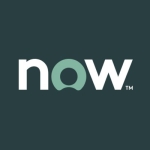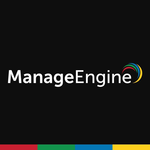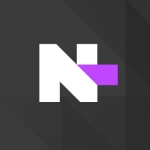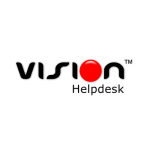What is our primary use case?
We use it as our ticketing system, as well as our ability to use CMDB and change management, and for our incident request management.
It has performed very well in these functions. We have been using it for eight years now.
How has it helped my organization?
It has helped us to organize a lot of our assets, so we have configuration items to attach to our change management. We can have tickets for change management and set them aside for an approval process. That is something we have never had before, and it is something we have been able to divide up amongst our different campuses for ticketing use. That is something we have not been able to do either.
What is most valuable?
I would say change management and request management, as well as CMDB.
What needs improvement?
We would like to see them revamp, or rework, a lot of their configuration management database structures. We hear that is on the horizon. We are very excited about that. That is something we use a lot.
We would like to see them integrate more of a service catalog, which is more of an Amazon-type fill in your bucket, then sign in, once you decide what you want. This is something that we would like to see from the product, as opposed to what we have seen in the past, which is login, then go pick. It would be nice to say, "I like this, I like this." Fill up your cart, then go buy it.
There is room for improvement. I think the product is going in a different direction than what is has before, which I think is good. I like that they are looking at things, and they are opening themselves up to the community and allowing for people to bring enhancements to them and ideas. To be able to share those ideas with their management.
For how long have I used the solution?
More than five years.
What do I think about the stability of the solution?
Our initial installation of the application was on a different platform. However, since we moved it to Windows, with a Windows database, things have been very stable as far as it is concerned.
We were using Linux beforehand, and it just was not stable enough. It had way too many problems, and we found out the customer base for Linux was small, so was the support. Therefore, moving into Windows was the better idea for us. It is much more stable now than it ever has been. We did the move in 2010.
What do I think about the scalability of the solution?
We have been able to utilize the system across all our different campuses. We find it to be fairly scalable, as far as bringing it up. We have not done HA yet, or any kind of high availability. That is something we are looking at as a possible future change. Right now, with our user base, we are pretty simple, but we find that it is scalable. It is something we are looking at in the future. Just not right now.
We have three different campuses, serving probably about 700 analysts, 40 different help desks, and about 70,000 possible customers.
How are customer service and technical support?
They are much better than eight years ago.
We have received much better support. People that really know what they are talking about. They are able to help us better than they were in the past. We have had less breakdowns in how long it takes to respond to us. Their response time has been improved over the last five years, or so. The response to us, as far as making enhancements or changes, has been good. We have had good luck with technical support. I have no problems with it at this point.
I think they are doing rather well, as far as their support. Where I work in the university, we have about 50 different applications that we support within our department, with a wide range of varying support structures and support. They are probably one of the top vendors which we work with that do well in response to us and helping us out.
Which solution did I use previously and why did I switch?
Usually, we look for a new solution because most of the group does not like a product, and they go after a different product. It is not usually something we look at as a corporate standpoint, because we are a state entity. There are always those that can get involved and say, "Hey, we want to make a change." It is not always just us that say, "Hey, let's go and do it."
Right now, the CA Service Desk Manager is a set standard for the university. All three campuses are using it, but there are some other help desks out there that are smaller help desks. Local help desks that are using other tools. Smaller tools. So, it is not like they have to use it from a corporate standpoint, but it is available to them if they want it.
Which other solutions did I evaluate?
I think we had the Amdocs product, which we had used before. Then, we had what is called Request Tracker, which is an open source tool for consulting. I can't remember some of the other ones. For this one, a lot of it came down to price, and what they could get for us. Then, it came down to the capabilities of making large changes that we could not make.
At the time, which would of been 2008, it was all web-based. A lot of the stuff that was being brought in was either Microsoft only, or it was client-based technology. This was a web-based technology, so that is kind of why we stuck with it at the time, but things have changed in 10 years. That was the original thought.
What other advice do I have?
Engage with consultants from the vendor at the very beginning. Learn the product, then train yourself to work on it. It is something you can work on yourself with a lot less consultation from the vendor. Also, take small steps before you start beginning with different parts of the tool. Do not try to bite off too much, as a lot of companies will try to do. Start with one, then work your way towards the others.
We are currently not using xFlow yet, but it is something we are going to take a hard look at as to whether or not it will be useful for us.
Most important criteria when selecting a vendor: I think a lot of it has to do with where their niche is in the market.
A lot of the decisions that are made are based upon bringing everybody in to have some sort of a RFP process, where they sit down, and do some sort of bidding. It is usually a bidding war, because were a state entity. I would like to say that we could pick a product based upon whether they are the best, but it doesn't always work that way.
I would personally like to see it where a product is more flexible. A product has the ability to make changes in the different environments, especially from a support standpoint. When you would go and look at different ways that help desks, or support, is structured across corporations, or across higher educations, in this case. There could be a lot of segmentation going on in lots of different places. It is nice if you are able to flexibly change the product to bring it to different customers, so you can support their needs. Flexibility is an important key for different vendors, but for us, it is nice.
We would also like to see them challenge themselves and not stick with the norms of specific platforms, such as Microsoft or Mac, even though typically businesses will only code to a specific platform like Windows. It is nice to see others do things where it works with different browsers, or it works with different platforms. That helps us out, because in our world it does not work all homogenized with a single platform. It is lots of different platforms.
Disclosure: PeerSpot contacted the reviewer to collect the review and to validate authenticity. The reviewer was referred by the vendor, but the review is not subject to editing or approval by the vendor.

















The Advanced Availability feature was a significant gain to the solution. Using this feature with a Load Balancer is valuable when it comes to scalability. However, there is still no use of F5 in conjunction with Web Directors.